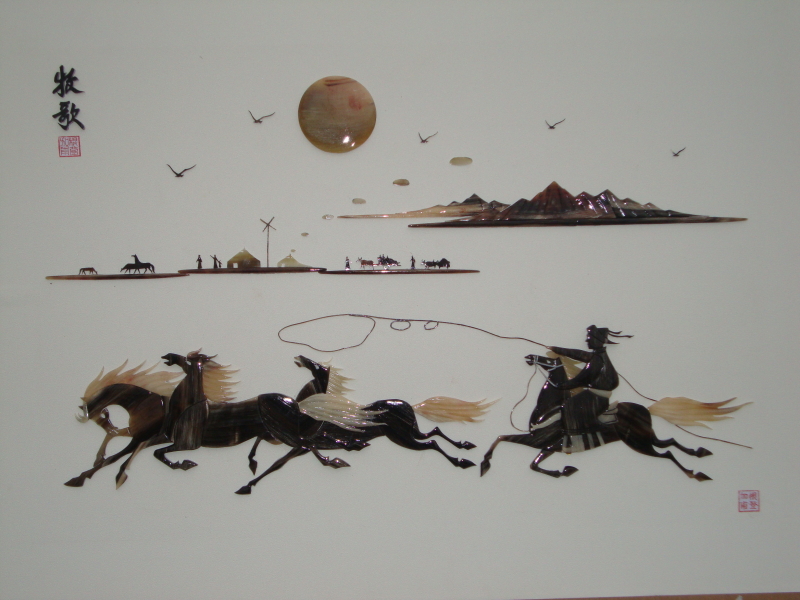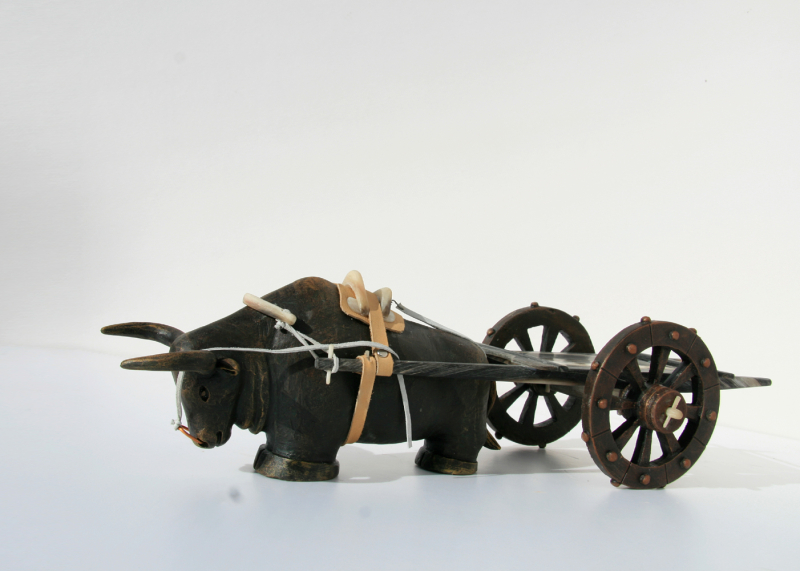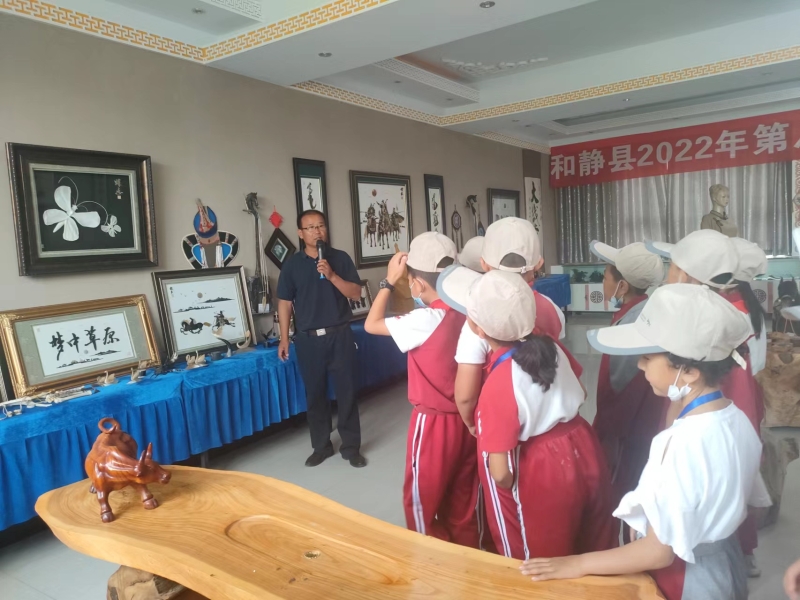Heroes who trekked to return to the east and the motherland China, herdsmen riding horses on grassland, frisking swans... Gendenjaw, a representative trustee dedicated to bone carving for 31 years in Xinjiang, carves vivid scenes on bones, and actively passes down this old art in the spare time of his productive life.

Photo shows Pastoral Song, a bone carving work created by Gendenjaw. (Photo offered by Gendenjaw)
Gendenjaw, 55 years old, is a native of Hejing County, Bayingolin Mongolian Autonomous Prefecture. He likes painting since he was a child, and after graduating from a normal school majoring in fine arts, he worked as an art teacher at a primary school in Bayanbulak Town of Hejing County. “Bayanbulak Grassland is beautiful, and there are herds of cattle and sheep. At that time, I often went there on weekends to sketch, and found a lot of cattle and sheep horns and animal bones, which gave inspirations of making artworks with horn scraps,” said Gendenjaw. Bone carving is a traditional folk art of Mongolian people, and keeping the idea in mind, he bought a graver and started studying the craft.
Gendenjaw will never forget his first bone carving work. “I was a greenhand at that time, and in order to create a fine work, I used up a dozen cattle bones, and my hands were wounded for several times.” He was in rapture when he saw ordinary cattle bones being carved into a lifelike bone carving artwork.
Since then, Gendenjaw started using graver rather than painting brush to create art works. As long as he has time, he would go to the grassland and collect some cattle and sheep horns and animal bones with peculiar shapes. Sometimes he would go to slaughter houses and herdsmen's homes to collect various animal bones and study them carefully after going home.

Photo shows the bone carving work Return to the East. (Photo offered by Gendenjaw)
“Bone carving is a kind of handicraft, which employs many processes, including discoloring, materials selecting, designing, cutting, grinding, polishing and assembling,” said Gendenjaw. From designing to carving, from shaping bold structures to refining, then to carving every detail, due to the complex process, some large works take one or two months to complete, which is a challenge to the stamina of craftsman.
“Hejing County is the hometown of ‘Return to the East’ (From 1770 to 1771, Khan Wobaxi led Torgut people to return from the west to Xinjiang in the east away from the rule of Tsarist Russia), as well as the place where the Bayanbulak Grassland, a national 5A tourist attraction, is located, which offers me two main themes to my carvings. One is the patriotic theme of ‘Return to the East’, the other is about the grassland,” said Gendenjaw. At the Nadaam Fair celebrated in the Bayanbulak Grassland in 1997, he exhibited more than 200 pieces of his elaborate carvings. What surprised him was that a tourist from South Korea liked one of his works very much, and bought it for 400 yuan, which firmed his confidence to keep making bone carvings.

Photo shows a vivid bone carving work. (Photo offered by Gendenjaw)
Gendenjaw’s skill increases with his training day after day. In 2010, he was awarded as the master of arts and crafts of Xinjiang, as well as the representative trustee of bone carving of Xinjiang. His studio was rated as a production base for the protection of the intangible cultural heritage in Xinjiang, and his bone carving works have been listed as ‘Xinjiang Gifts’ (a regional brand of tourism products, gifts and souvenirs created by the Cultural and Tourism Department of Xinjiang). His representative works, including Return to the East, Going Home, Pastoral Song, won national level awards.
Now, Gendenjaw is engaged in tourism souvenir development in the Bureau of Culture, Sports, Radio, Television and Tourism of Hejing County. To pass down the craft of bone carving, he teaches the skills voluntarily to the farmers and herdsmen of Bayanbulak Town. Up to now, he has opened several training courses, at which he has trained more than 200 farmers and herdsmen. For the learners who come to learn at his home, he charges no tuition, and even pays them living expenses.

Photo shows Gendenjaw explains bone carving skills to the students of Huashan Middle School at his studio. (Photo offered by Gendenjaw)
“Enduring the hardship of creating bone carving works is quite hard to young people, but it is the most important thing.” Next, Gendenjaw plans to make some innovations on the old bone carving skills and develop more works with more varieties, and encourage more local farmers and herdsmen to learn the craft, so that people can increase their income from tourism by making bone carvings.
(A written permission shall be obtained for reprinting, excerpting, copying and mirroring of the contents published on this website. Unauthorized aforementioned act shall be deemed an infringement, of which the actor shall be held accountable under the law.)









